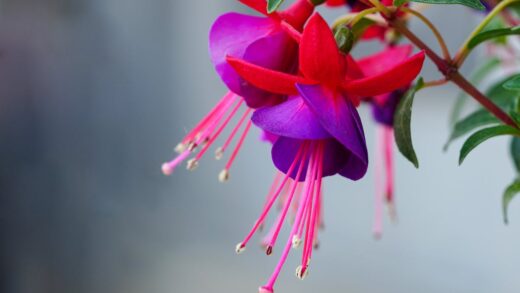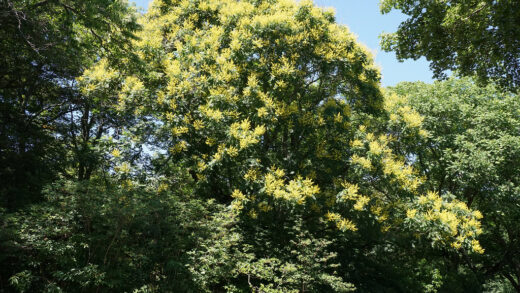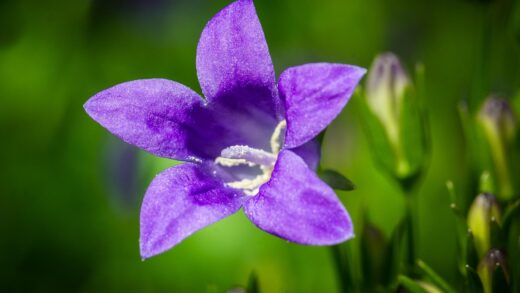The concept of pruning, as it applies to most fruit trees and shrubs, does not directly translate to the cultivation of garlic, which is a herbaceous bulb. Garlic plants do not develop woody stems or branches that require shaping or removal to encourage fruit production. However, there is a very specific and important practice in the cultivation of hardneck garlic varieties that is analogous to pruning: the removal of the flower stalk, known as the “scape.” This singular act of “pruning” has a direct and significant impact on the final size and quality of the harvested bulb, making it a critical step for any serious hardneck garlic grower.
Hardneck garlic, true to its name, produces a rigid central stalk that grows directly from the center of the bulb. In late spring or early summer, this stalk will extend above the leaves and form a distinctive curl or coil at its tip, which contains an umbel of small, aerial bulbils. This structure is the plant’s attempt at sexual reproduction. The development of this scape and the bulbils it contains requires a substantial amount of the plant’s energy and resources.
If the scape is left to grow and mature, the plant will divert a significant portion of the energy produced by its leaves towards developing the flower and bulbils. This is a diversion of resources away from the primary goal of the grower, which is the development of the underground bulb. The plant’s energy is finite, and allowing it to be spent on the scape will invariably result in a smaller final bulb with less dense cloves. The plant essentially splits its investment between producing the bulb and producing the aerial bulbils.
Therefore, the practice of removing the scape is a strategic intervention designed to redirect the plant’s energy flow. By cutting off the scape before it has a chance to fully develop and consume a large share of the plant’s resources, the grower forces the plant to send all the energy produced by its leaves downward, into the bulb. This concentration of energy leads to a larger, heavier, and more robust bulb at harvest, with studies showing that removing the scape can increase bulb weight by 25% or more.
Understanding the garlic scape
The garlic scape is the flowering stalk of a hardneck garlic plant (Allium sativum var. ophioscorodon). It is a unique and telling feature that distinguishes hardneck varieties from their softneck counterparts, which do not produce this rigid central stem. The scape emerges from the center of the leaf whorl in late spring or early summer, appearing as a round, green shoot that grows upwards before typically forming one or two distinctive loops or coils. At the tip of this stalk is a pointed sheath that encloses the umbel, where the plant’s flowers and, more commonly, its aerial bulbils will develop.
More articles on this topic
The emergence of the scape is a clear and reliable indicator that the garlic plant is transitioning from its vegetative growth stage to its reproductive and bulbing stage. It signals that the plant has reached a certain level of maturity and is now shifting its primary focus. For the grower, the appearance of the scape serves as a crucial visual cue. It not only marks the time for the important task of scape removal but also indicates that the bulbing process is well underway and that harvest is approximately three to four weeks away.
The scape itself is not just a biological indicator; it is also a valuable culinary bonus. Harvested at the right time, when it is still tender and succulent, the garlic scape is a delicious gourmet vegetable. It has a mild, sweet garlic flavour with a hint of green freshness, often compared to a cross between garlic and asparagus or green onion. Scapes can be used in a wide variety of dishes, from sautés and stir-fries to pestos and soups, providing an early taste of the garlic harvest to come.
From a botanical perspective, the scape and the bulbils it produces represent a form of asexual reproduction for the garlic plant. Each tiny bulbil is a genetic clone of the parent plant and can be planted to grow a new garlic plant, though it typically takes two or more years to produce a full-sized bulb. While this is a useful method for propagating large quantities of disease-free stock, for the grower focused on bulb production, the scape represents a direct competitor for the plant’s resources.
The timing and technique of scape removal
The timing of scape removal is critical to maximizing its benefit to bulb size while also harvesting the scape itself at its peak culinary quality. If you remove it too early, when it is very short, the plant may try to send up another, weaker scape. If you wait too long, after the stalk has straightened and become woody, a significant amount of energy has already been diverted from the bulb, and the scape itself will be tough and inedible. The ideal time to cut the scape is after it has emerged from the leaves and has formed its characteristic curl or loop.
More articles on this topic
A common rule of thumb is to harvest the scape once it has completed its first full loop or curl. At this stage, the stalk is still tender and succulent, perfect for cooking, and its removal will have the maximum positive impact on redirecting energy to the bulb. As the scape continues to grow, it will begin to uncoil and straighten out as it reaches for the sky. Once it becomes straight and vertical, it has begun to lignify, or become woody, and much of the potential benefit to the bulb has been lost.
The technique for removing the scape is simple. You can use a pair of sharp pruning shears, a knife, or even your fingers to snap it off. The cut should be made as low as possible on the stalk, down near where it emerges from the top set of leaves, without damaging any of the leaves themselves. The leaves are the plant’s engine for photosynthesis, so it is important to keep them intact and healthy for as long as possible. A clean cut will heal quickly and minimize the risk of introducing any pathogens.
After removal, the scapes can be collected and treated as a fresh vegetable. They can be stored in the refrigerator for several weeks and used in any recipe that calls for a mild garlic flavour. This “pruning” process is therefore doubly rewarding: it is a crucial horticultural practice that directly leads to a better primary harvest of garlic bulbs, and it simultaneously provides a secondary harvest of a unique and delicious culinary ingredient.
The impact on bulb development
The physiological impact of scape removal on bulb development is direct and profound. The garlic plant operates on a system of energy allocation, distributing the sugars produced during photosynthesis to various “sinks,” or areas of growth. Before the scape emerges, the primary sinks are the leaves and the roots. Once the scape appears, it becomes a very strong sink, demanding a large portion of the plant’s energy to support its growth and the development of the bulbils. By physically removing this competing sink, the grower fundamentally alters the plant’s energy distribution.
With the scape gone, the developing underground bulb becomes the dominant, and almost exclusive, energy sink. All the photosynthetic output from the leaves is now channeled downward to be stored in the bulb. This massive influx of energy fuels the rapid swelling and division of the cloves. The result is a bulb that is noticeably larger, denser, and heavier than one from a plant where the scape was left to mature. The difference in final bulb weight can be 25-30% or even more, a significant gain that is achieved through this one simple act of intervention.
This practice also appears to affect the storage quality of the bulbs. By allowing the bulb to reach its full size potential and maturity, scape removal contributes to the development of tighter, more robust wrappers. A fully mature bulb with dense cloves and strong skins will cure more effectively and will generally have a longer shelf life than a smaller, less developed bulb. The energy that would have gone into the scape is instead invested in creating a higher quality, more durable final product.
It is important to note that this entire process applies only to hardneck garlic varieties. Softneck garlic (Allium sativum var. sativum) does not produce a scape, so there is nothing to remove. Its energy is naturally directed towards bulb and leaf growth. This is one of the reasons why softneck varieties often produce bulbs with a larger number of smaller cloves and tend to have a longer storage life; their energy budget is never partitioned to produce a flower stalk.
What to do with the rest of the plant
Aside from removing the scapes on hardneck varieties, there is no other pruning or cutting back required for garlic plants during the growing season. The leaves are the plant’s lifeblood; they are the solar panels that create all the energy needed for bulb growth. It is crucial to protect the leaves and allow them to grow unimpeded. You should never trim or cut back the green leaves of a garlic plant during its growth phase, as this would be like removing the engine from a factory, directly reducing the plant’s ability to produce a large bulb.
As the garlic plant approaches maturity, its leaves will begin to senesce, or die back, naturally. This process starts with the lowest leaves turning yellow and then brown, and it gradually moves up the plant. This is a normal and essential part of the maturation process. The plant is actively withdrawing nutrients and energy from these older leaves and relocating them to the bulb for storage. Do not be tempted to “tidy up” the plant by removing these yellowing leaves; allow this natural process to complete itself fully.
The number of remaining green leaves on the plant is a good indicator of the number of protective paper wrappers the bulb will have at harvest. Each green leaf corresponds to a layer of skin around the bulb. This is why it is important to wait until about a third to a half of the leaves have browned before harvesting. Harvesting too early, when most leaves are still green, will result in a bulb with thin, weak wrappers that will not store well.
After the bulb has been harvested, the leaves and stem are left attached to the bulb for the initial curing process. They are not cut back until after the garlic has been fully cured for several weeks. During curing, the remaining moisture and nutrients in the leaves and stem are drawn down into the bulb, contributing to its final flavour and storage potential. Only once the stems are completely dry and the necks are constricted should the tops be trimmed back for final storage.


















